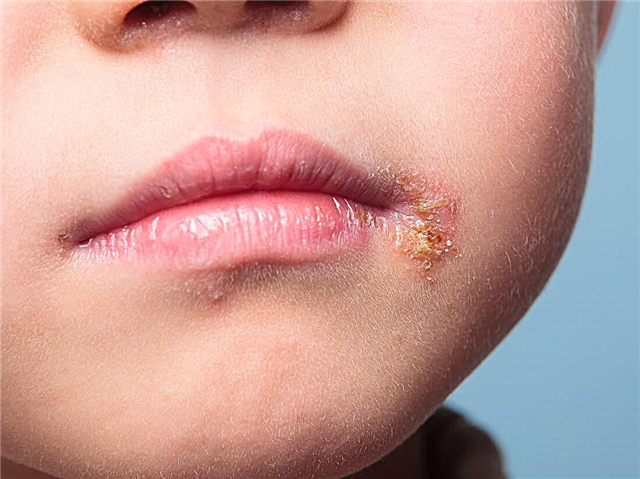The most common syndromes in the first month of a child's life are vomiting and regurgitation. Most often they are functional in nature, but they can also be manifestations of serious diseases. One of the diseases where the main manifestation of vomiting is pyloric stenosis. This is a condition that can only be treated promptly.
If your child is vomiting, do not panic, but you should contact a pediatrician who will examine the baby and prescribe additional examinations.
Definition of the concept and basis of the anatomy of the pyloric stomach
Pyloric stenosis is an obstruction of the pyloric section of the stomach.
To understand the pathology, you need to know the normal structure of the organ. The stomach has a bean-shaped shape, large and small curvature, it can be conditionally divided into several sections:
- the cardiac section is the place where the esophagus passes into the stomach, has a cardiac pulp, which prevents food from returning from the stomach back to the esophagus;
- bottom - a domed vault located in the upper part of the stomach, despite its name;
- body - the main part of the stomach, in which the digestion process takes place;
- pyloric section (gatekeeper) - the zone of transition of the stomach into the duodenum, in this section there is a pyloric pulp, which, when relaxed, passes food processed by gastric juice into the duodenum, in the closed state the sphincter prevents the premature transition of undigested food mass.
The pyloric section has a funnel-shaped shape, it gradually narrows towards the bottom. Its length is about 4 - 6 cm. In the pylorus, the muscular apparatus is more developed than in the body of the stomach, and the mucous membrane from the inside has longitudinal folds that form the alimentary lane.
Congenital pyloric stenosis is an obstruction of the pyloric section of the stomach due to hypertrophy of the muscle layer.

Etiology of pyloric stenosis
For the first time, a detailed description of congenital hypertrophic pyloric stenosis was provided by Hirschsprung in 1888. Currently, the disease is considered to be quite common, its frequency is 2: 1000 newborns. The main percentage are boys (80%), more often from the first pregnancy.
The exact cause of pyloric stenosis is not known. There are factors that contribute to the development of the disease:
- immaturity and degenerative changes in the pyloric nerve fibers;
- an increase in the level of gastrin in the mother and the child (gastrin is a hormone that is produced by the G-cells of the pyloric stomach, it is responsible for the proper functioning of the digestive system);
- environmental factors;
- genetic factor.
Clinical manifestations
Pyloric stenosis, although it is a congenital disease, changes in the gatekeeper in a child do not occur in utero, but in the postnatal period. Thickening of the pyloric muscle layer occurs gradually, therefore, clinical symptoms appear from 2 to 3 weeks of life, when the lumen of the pyloric section is significantly narrowed.
The main manifestation of the disease is vomiting. More often, from the second week of a baby's life, vomiting spontaneously appears as a "fountain" - a large volume, intense. It occurs more often between feedings. Stagnant vomit, milk with curdled sediment, sour smell is felt, there is never any admixture of bile. The volume of vomit most often exceeds the volume of feeding. Every day, vomiting becomes more frequent and with a large volume.
The child becomes restless, capricious, eats greedily, looks hungry. As the disease progresses, pronounced nutritional disorders are noted - there is a decrease in body weight, subcutaneous fat disappears, the skin becomes flabby and dry. The chair leaves less often, in a small volume and is called “hungry chair”. The volume of urination also decreases.
With vomiting, the child loses not only the nutrients of milk, but also the essential minerals of his body. The later the diagnosis of pyloric stenosis is made, the more pronounced are the signs of dehydration in the child, and electrolyte disturbances occur. In the acute form of the course of the disease, this symptomatology develops very quickly and leads to a serious condition of the baby within a week.

Diagnostics
Based on the mother's complaints, a diagnosis of pyloric stenosis can already be assumed.
Nowadays, you can meet children who were treated for vomiting and spitting up conservatively, which erases the bright clinic of pyloric stenosis. There are children with a confirmed diagnosis, but not underweight and signs of dehydration.
When examining the anterior abdominal wall of a child, especially after feeding, one can see increased peristalsis of the stomach - a symptom of an "hourglass". It is not always pronounced and is more common in the later stages of the disease.
On palpation of the abdomen, a dense, mobile neoplasm is determined slightly to the right of the umbilical ring - a hypertrophied pylorus. Sometimes the pylorus is located higher and is not palpable due to the overhanging liver. Also, deep palpation of the abdomen is not always available due to the child's anxiety and active muscle tension.
The main method of additional examination for the diagnosis is ultrasound examination of the abdominal organs. The stomach is enlarged, contains a large amount of air and fluid, its wall is thickened. The pyloric section is very tightly closed, does not open. The thickness of the pylorus wall reaches 4 mm or more due to the thickening of the muscle pulp, the length of the pyloric canal reaches 18 mm.

Also, an additional research method is X-ray contrast - passage of barium along the gastrointestinal tract. Although X-ray examination carries radiation exposure, it is informative and allows you to accurately determine the patency of the pylorus. The child is given about 30 ml of contrast agent through the mouth (5% suspension of barium in breast milk or 5% glucose solution). Plain radiography of the abdominal cavity is performed one hour and four hours after giving contrast. With pyloric stenosis, a large gas bubble of the stomach with one level of liquid will be determined on the picture. The evacuation of contrast from the stomach to the duodenum is slowed down. After examination, the stomach must be emptied to prevent barium aspiration during subsequent vomiting.
One of the methods for diagnosing congenital pyloric stenosis is video esophagogastroscopy (VEGDS), but this type of examination can be performed for children only under anesthesia. At the same time, the section of the stomach in front of the gatekeeper is expanded, the lumen of the pyloric canal is significantly narrowed, it is not passable for the gastroscope, it does not open when inflated with air (which is a difference from pylorospasm). In addition, with VEGDS, it is possible to examine the esophageal mucosa and determine the degree of inflammatory changes, which is very characteristic of reflux.
Laboratory data will reflect metabolic alkalosis, hypokalemia, hypochloremia, decreased circulating blood volume, and a drop in hemoglobin levels.

Differential diagnosis
The differential diagnosis of pyloric stenosis is carried out with pylorospasm, gastroesophageal reflux, pseudopylorostenosis (a salt-wasting form of adrenogenital syndrome) and high duodenal obstruction.
Differential diagnosis is carried out on the difference between the onset and nature of the manifestation of the disease.
With adrenogenital syndrome, there will be an admixture of bile in the vomit, the volume of urination will increase, and the feces will be liquefied. With additional methods of examination, the gatekeeper will be well passable, in laboratory tests, in contrast, there will be metabolic alkalosis and hyperkalemia.
With gastroesophageal reflux, the disease manifests itself from the first days of a baby's life, vomiting and regurgitation will occur immediately after feeding and when the baby is in a horizontal position. With additional studies, the gatekeeper will be passable, and on VEGDS in the esophagus there will be pronounced reflux esophagitis, up to mucosal ulcers.
With high duodenal obstruction, vomiting most often begins immediately after the birth of the child. X-ray contrast examination will determine two levels of fluid - in the stomach and duodenum. VEGDS will accurately show the level of stenosis.
Treatment
With an established diagnosis of pyloric stenosis, treatment is only surgical. The main task of the operation is to remove the anatomical obstacle and restore the patency of the pyloric stomach.
Surgery must be preceded by preoperative preparation, correcting hypovolemia, replenishing the circulating blood volume, eliminating electrolyte disturbances, hypoproteinemia and anemia. It is also necessary to achieve an adequate diuresis. Preparation is carried out in an intensive care setting and can take from 12 to 24 hours, depending on the severity of the baby's condition.
The operation of choice is extramucosal pyloromyotomy according to Frede-Ramstedt. Extramucosal surgeries were first performed by Frede in 1908 and Ramstedt in 1912. The operation is performed only under general anesthesia. An incision of the anterior abdominal wall is performed, the sharply thickened pyloric section of the stomach is removed, the serous and muscular layer in the avascular zone is cut longitudinally. The mucous membrane remains intact.
Currently, laparoscopic operations are widespread. The main meaning and course of the operation do not change. But access to the abdominal cavity is carried out through three small punctures of the anterior abdominal wall, and the operation takes place under video control.
Complications of the operation can be perforation of the pyloric mucosa, bleeding, incomplete pyloromyotomy and the development of a relapse of the disease.
After the end of the operation, the child is transferred to the intensive care unit. After 4 - 6 hours after it, the baby begins to drink a little with 5% glucose solution, then they give 5 - 10 ml of milk every 2 hours. At the same time, the deficiency of fluid, electrolytes and protein is replenished through infusion therapy and parenteral nutrition. On the following days, the amount of milk is increased by 10 ml with each feeding. By the sixth day after the operation, the child should absorb 60 - 70 ml every 3 hours, then the baby is transferred to a normal diet.

The stitches are removed on the 7th day after the operation, in the absence of complications, the child is discharged for outpatient observation.
The prognosis for pyloric stenosis is favorable. After discharge, children should be registered with a pediatrician for the correction of hypovitaminosis and anemia until complete recovery.



